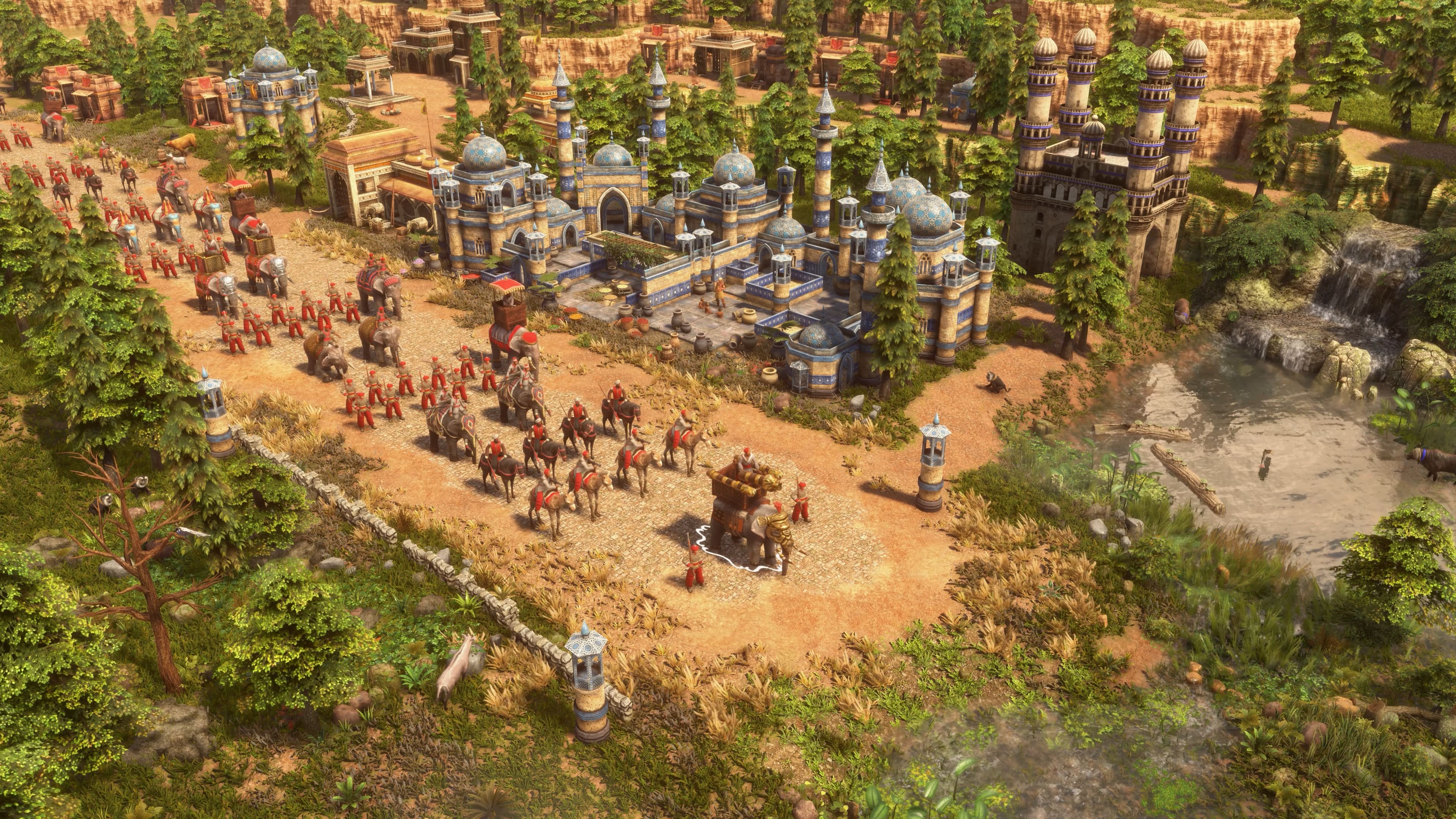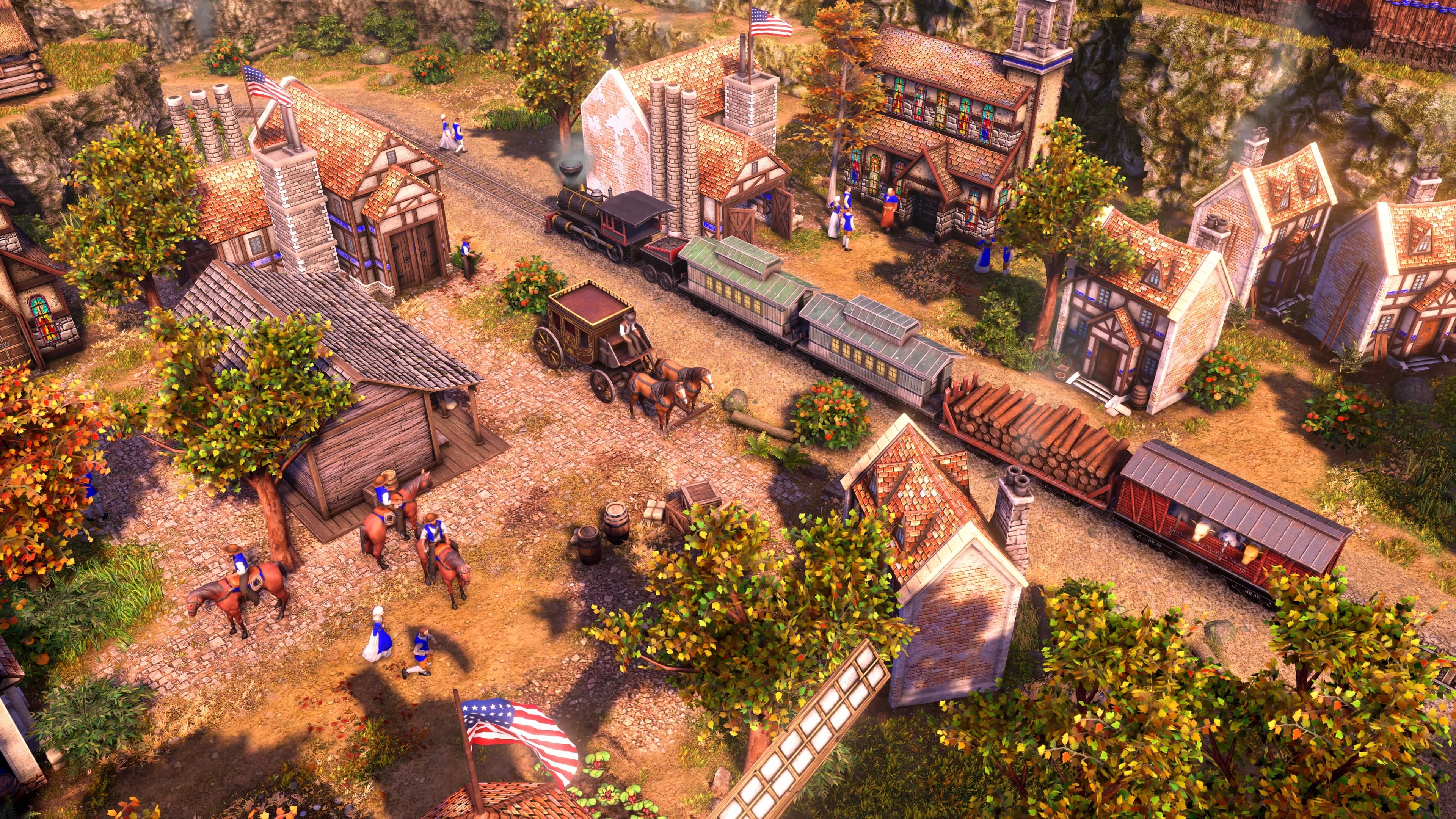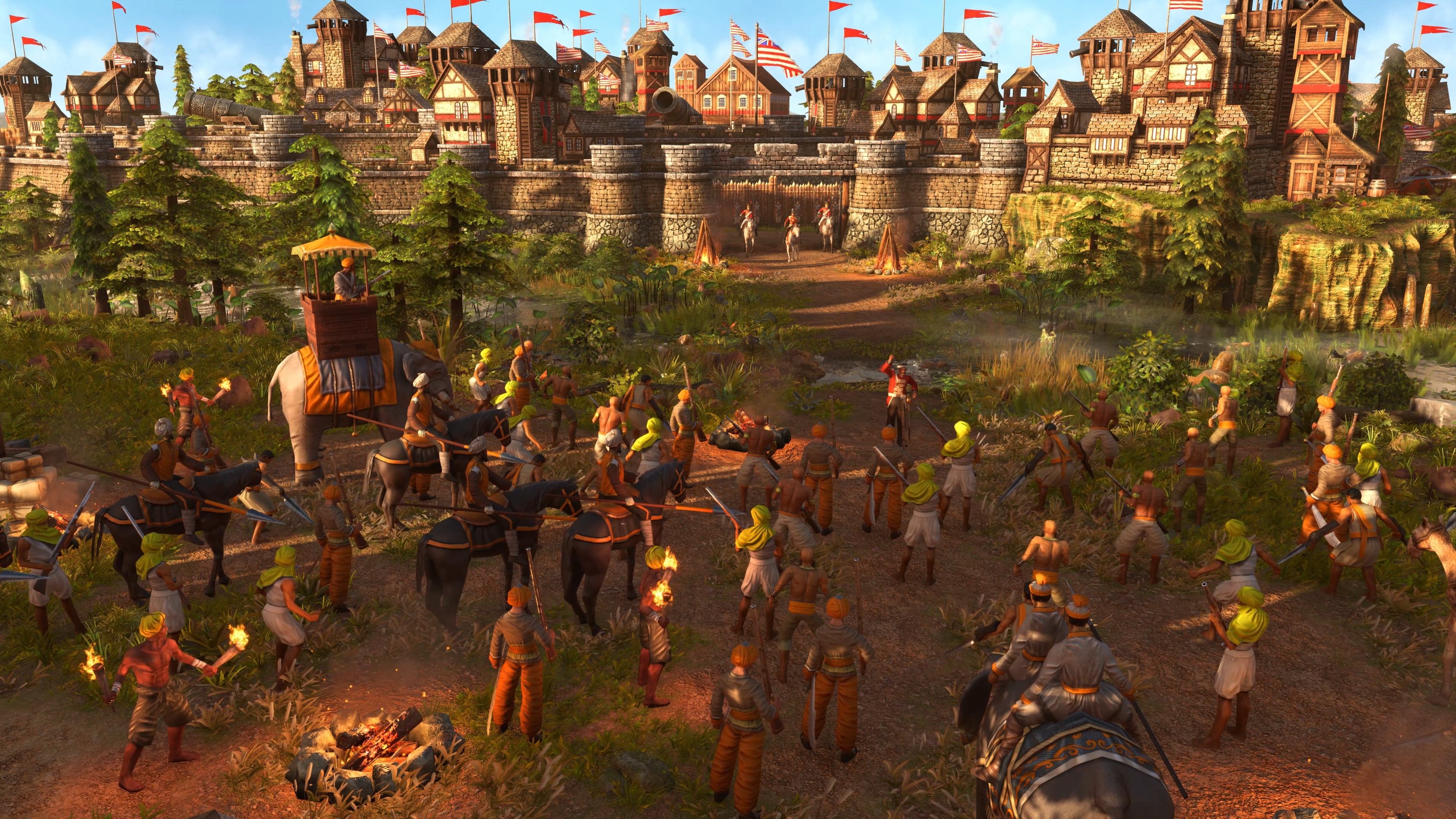Which is the best Age of Empires III civilization for beginners?
Age of Empires III: Definitive Edition has 14 civilizations; some are simpler to learn than others

Age of Empires III: Definitive Edition launched this week, and players are already flocking back to the Early Modern era in droves. While Age of Empires III still has an amazingly high skill ceiling, it’s not quite as exacting or arcane as Age of Empires II: Definitive Edition, which means it’s a surprisingly good choice for newcomers to the series.
Even in its Definitive Edition, Age of Empires III has smaller maps, fewer civilizations and less complicated gameplay than its predecessor. This isn’t strictly a good or bad thing — players have been arguing about each game’s relative merits for the last 15 years. But it does mean that if you’ve always wanted to play an historical RTS, either by yourself or against other players, Age of Empires III could be a very good place to start.
- Play the best free PC games
- Try one of the best gaming keyboards
To learn how to play the game, the best thing you can do is play through the Tutorial, which walks you through the game’s basic structure, the challenges you to win a match against the AI by yourself. But once that’s over, where do you go next? After all, the game has 14 different civilizations, and each one plays quite differently. In fact, unlike the first two Age of Empires games, in AOEIII, each civilization has totally different units available to it. How you train villagers, recruit soldiers and construct cities changes drastically depending on which civilization you pick.
To that end, after playing Definitive Edition for more than a dozen hours (and the original game for who-knows-how-much longer), I’ve selected five civilizations that are especially welcoming for newcomers. This isn’t to say that they’re the “best” civilizations in the game, or that they’ll ultimately be your favorite ones to play. But each one streamlines at least one difficult aspect of the game, and should help you hit the ground running a little bit faster. When you feel comfortable with these, be sure to try out the rest; every civilization has unique strengths and weaknesses.
A note on campaigns

In AOEII, one of the best ways to get a feel for different civilizations was to play through the historical campaigns. Each series of campaign missions put a particular civ in the spotlight, whether it was the Franks for Joan of Arc or the Mongols for Genghis Khan.
Unfortunately, AOEIII’s campaigns use customized civilizations that don’t correspond neatly with the 14 usual options. While playing through the campaigns can be fun, and will teach you the fundamentals of gathering resources, building a military and so forth, they won’t give you a good sense of how the game’s main civilizations work.
The three exceptions are the Japan, China and India scenarios in the Asian Dynasties campaigns. These short campaigns use the Japanese, Chinese and Indian civilizations, more or less as you would play them in the main game. However, the scenarios themselves don’t involve standard win conditions or strategies, so playing Skirmish games instead may still be a smarter option.
Sign up to get the BEST of Tom's Guide direct to your inbox.
Get instant access to breaking news, the hottest reviews, great deals and helpful tips.
British

Assuming you start with the Tutorial, the British are the first civilization you’ll play in Age of Empires III. That means you’ll learn all of your basic commands as the British, the first town you build will be as the British, and the first army you assemble will be as the British. In other words, before you ever set foot in a Skirmish or multiplayer game, you’ll already have a good idea of what buildings you need, which units you can field and what kind of strategy you should use.
The British can be a great choice for beginners, since you can choose to get a new Settler each time you build a Manor House. (To do this, simply make sure you have the right card in your deck, and choose it when you get a shipment from your Home City.) This means that your supply of Settlers will increase rapidly early on, and you should be able to collect plenty of resources to outfit your army and upgrade your tech.
French
The French are a fantastic catch-all civilization, as they can focus on either economics or military might, depending on how the game progresses. This means that if you play as the French, you’ll learn both paths to victory sooner or later. Their basic villager, the Coureur des Bois, can take a lot of punishment, and they gather resources very fast, too. They also ally easily and cheaply with native tribes, meaning that they’re adaptable for any map.
To succeed as the French, train lots of Coureurs early on, and invest the resources later on in powerful cavalry units, as well as upgrading your halberd infantry all the way. If you can ally with native tribes, do so, and consider making those units a significant part of your army, particularly early on.
Indians
The Indians may be a controversial choice for new players, since they’re a rather complex civilization. They can hunt wild animals, but won’t eat livestock; you train villagers with wood instead of food; their explorer unit is also a healer. But Indians are also a fantastic choice for early economic growth, since they get an additional villager with every shipment from the Home City.
Another advantage the Indians have for new players is their ability to build up an army passively. If you choose the Conscript Sepoys card, you’ll receive two Sepoys with each Home City shipment instead of a villager. Sepoys aren’t the strongest soldiers in small groups, but they’re excellent for early-game defense or protecting more valuable units later in the game. An army of Sepoys can be a formidable asset.
Lakota
Formerly known as the Sioux, the Lakota have one major advantage over other civs: They don’t have to build houses. Experienced players argue that this could build bad habits in new players, as managing your population early on is an important skill to master. On the other hand, there are plenty of other skills to learn, and starting with a maxed population cap lets you build as many units as you want, whenever you can afford them.
The Lakota can produce spectacular cavalry, so upgrading and fielding the right units isn’t too much of a challenge. The only real difficulty for the Lakota is that they can’t build walls or siege weapons, which severely limits their late-game options. While slower, more defensive civilizations are arguably better for new players, there’s also something to be said for a fast, streamlined one with a very straightforward path to victory.
Ottomans
The Ottomans are an excellent choice for newcomers, as they get Settlers for free. You don’t have to train them manually; they simply appear at your Town Center periodically. This is also potentially disastrous for new players, since spending resources on Settlers is an important part of the early game. On the other hand, if you want to learn about military strategy first and economic strategy later, the Ottomans should be your first stop.
Janissaries make a fantastic backbone to an Ottoman army, as they’re both durable and easy to train in large groups. However, be sure to also spend some time with your Mosque, as it will allow you to upgrade both the number and training rate of your Settlers. If you don’t, you could find yourself with a major resource shortage come mid- or late-game.
Marshall Honorof is a senior editor for Tom's Guide, overseeing the site's coverage of gaming hardware and software. He comes from a science writing background, having studied paleomammalogy, biological anthropology, and the history of science and technology. After hours, you can find him practicing taekwondo or doing deep dives on classic sci-fi.
-
AlexEmpires Reply
Age of Empires III: Definitive Edition added two new civilizations - Incas and Swedes - so the total number of civilizations is now 16.admin said:Age of Empires III: Definitive Edition has 14 civilizations.

